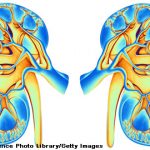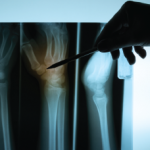Suggestions on how to assess risk and manage bone issues in chronic kidney disease patients are offered…


Suggestions on how to assess risk and manage bone issues in chronic kidney disease patients are offered…
Lisa Rapaport |
(Reuters Health)—Patients hospitalized for a hip fracture are less likely to experience a subsequent fracture-related hospitalization if they start anti-osteoporosis medication sooner, a Taiwanese study suggests.1 Researchers examined data on 77,930 patients aged 50 years and older hospitalized for hip fractures, including 9,986 people prescribed anti-osteoporosis medications within one year of the index fracture. Compared…

A clinician’s ability to determine which patients are at greatest risk for hip or other fracture is improving with the use of algorithm-based fracture risk calculators…

Micah Yu, MD, Anna Lafian, DO, & Christina Downey, MD |
Imagine leaving the hospital after suffering a heart attack without being treated for hypertension or being started on a beta blocker. What would we think of the hospital where patients are never educated about the relationship between treating hypertension and reducing myocardial infarction and stroke risk? Unfortunately, this happens every day with osteoporosis and fractures…
Megan Brooks |
NEW YORK (Reuters Health)—Rates of osteoporotic fracture were similar three years after starting either denosumab or alendronate in a real-world Danish population-based cohort study. “Previous studies have shown that denosumab is more efficacious than alendronate in increasing bone mineral density (BMD), possibly the best proxy outcome for subsequent fracture risk. However, previous studies were underpowered…

Higher anxiety levels in postmenopausal women may put them at increased risk of fracture and should be considered when assessing a woman’s risk of osteoporosis as well. This is the conclusion of a study recently published in the journal Menopause that looked at the role of anxiety in bone health.1 Specifically, the study examined the…
Reuters Staff |
NEW YORK (Reuters Health)—In what is believed to be the largest study investigating genetic and clinical determinants of osteoporotic fracture risk, only a genetic predisposition to low bone mineral density (BMD) had a potential causal role to play. “Notably, genetic predisposition to lower levels of vitamin D and estimated calcium intake from dairy sources were…
Lisa Rapaport |
(Reuters Health)—Older women with osteoporosis who consistently take a bisphosphonate may have a lower risk of fractures and lower total health costs than their counterparts who stop taking these drugs, a U.S. study suggests. Researchers examined data on 294,369 women who were at least 66 years old, insured by Medicare and prescribed osteoporosis medicines for…
Anne Harding |
NEW YORK (Reuters Health)—Levels of two bone markers currently recommended for evaluating postmenopausal women with osteoporosis have no association with hip fracture risk, according to a new study using Women’s Health Initiative data. “At least in these postmenopausal women, it was not a useful endeavor to check bone turnover markers to predict hip-fracture risk. That…
Scott Baltic |
NEW YORK (Reuters Health)—Bone mineral density (BMD), particularly lumbar BMD, may not reliably indicate the presence of asymptomatic vertebral fragility fractures in post-menopausal women, new findings suggest. In a study online May 9 in Bone, Italian researchers found such fractures were common among women seen at an osteoporosis clinic, yet the vast majority had not…